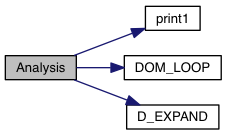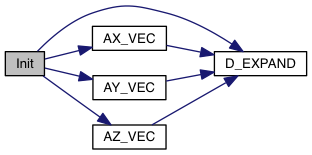|
PLUTO
|
|
PLUTO
|
Circularly polarized Alfven waves. More...
#include "pluto.h"
Go to the source code of this file.
Functions | |
| static double | AX_VEC (double x, double y, double z) |
| static double | AY_VEC (double x, double y, double z) |
| static double | AZ_VEC (double x, double y, double z) |
| void | Init (double *us, double x1, double x2, double x3) |
| void | Analysis (const Data *d, Grid *grid) |
| void | UserDefBoundary (const Data *d, RBox *box, int side, Grid *grid) |
Variables | |
| static double | ta = 0.0 |
| static double | tb = 0.0 |
| static double | ca |
| static double | sa |
| static double | cg |
| static double | sg |
Circularly polarized Alfven waves.
This is a rotated version of a 1D setup where
![\[ \rho = 1 \,,\quad v_x = V_0 \,,\quad v_y = |\epsilon|\cos(\phi) \,,\quad v_z = |\epsilon|\sin(\phi) \,,\quad B_x = 1 \,,\quad B_y = \epsilon\cos(\phi) \,,\quad B_z = \epsilon\cos(\phi) \,,\quad P = P_0 \,, \]](form_278.png)
where  is the translation velocity in the 1D
is the translation velocity in the 1D  direction,
direction,  is the phase (
is the phase (  in 1D and (
in 1D and (  ) in 2D), and
) in 2D), and  is the wave amplitude (
is the wave amplitude (  implies right going waves;
implies right going waves;  implies left going waves).
implies left going waves).
With this normalization, the Alfven velocity  is always one.
is always one.
Rotations are specified by  and
and  expressing the ratios between the
expressing the ratios between the  - and
- and  - components of the wave vector with the
- components of the wave vector with the  component. We choose the wavelength in
component. We choose the wavelength in  -direction to be always 1, so that
-direction to be always 1, so that  ,
,  ,
,  so that
so that  ,
,  . By choosing the domain in the
. By choosing the domain in the  -direction to be 1, the extent in
-direction to be 1, the extent in  and
and  should be adjusted so that
should be adjusted so that  (and similarly for
(and similarly for  ) becomes an integer number to ensure periodicity. If one wants 1 wave length in both directions than
) becomes an integer number to ensure periodicity. If one wants 1 wave length in both directions than  ,
,  ,
,  .
.
If  wavelengths are specified in the
wavelengths are specified in the  -direction than
-direction than  ,
,  ,
, 
1D is recovered by specifying  .
.
The final time step is one period and is found from
 –>
–> 
The runtime parameters that are read from pluto.ini are
g_inputParam[EPS]: sets the wave amplitude  ;
;g_inputParam[VEL0]: sets  ;
;g_inputParam[PR0]: sets the pressure of the 1D solution;g_inputParam[ALPHA_GLM]: ;Configurations:
References:
Definition in file init.c.
Perform runtime data analysis.
| [in] | d | the PLUTO Data structure |
| [in] | grid | pointer to array of Grid structures |
Definition at line 151 of file init.c.

|
static |
Definition at line 218 of file init.c.


|
static |
Definition at line 247 of file init.c.


|
static |
Definition at line 275 of file init.c.


| void Init | ( | double * | us, |
| double | x1, | ||
| double | x2, | ||
| double | x3 | ||
| ) |
The Init() function can be used to assign initial conditions as as a function of spatial position.
| [out] | v | a pointer to a vector of primitive variables |
| [in] | x1 | coordinate point in the 1st dimension |
| [in] | x2 | coordinate point in the 2nd dimension |
| [in] | x3 | coordinate point in the 3rdt dimension |
The meaning of x1, x2 and x3 depends on the geometry:
![\[ \begin{array}{cccl} x_1 & x_2 & x_3 & \mathrm{Geometry} \\ \noalign{\medskip} \hline x & y & z & \mathrm{Cartesian} \\ \noalign{\medskip} R & z & - & \mathrm{cylindrical} \\ \noalign{\medskip} R & \phi & z & \mathrm{polar} \\ \noalign{\medskip} r & \theta & \phi & \mathrm{spherical} \end{array} \]](form_173.png)
Variable names are accessed by means of an index v[nv], where nv = RHO is density, nv = PRS is pressure, nv = (VX1, VX2, VX3) are the three components of velocity, and so forth.
Definition at line 78 of file init.c.

Assign user-defined boundary conditions.
| [in,out] | d | pointer to the PLUTO data structure containing cell-centered primitive quantities (d->Vc) and staggered magnetic fields (d->Vs, when used) to be filled. |
| [in] | box | pointer to a RBox structure containing the lower and upper indices of the ghost zone-centers/nodes or edges at which data values should be assigned. |
| [in] | side | specifies the boundary side where ghost zones need to be filled. It can assume the following pre-definite values: X1_BEG, X1_END, X2_BEG, X2_END, X3_BEG, X3_END. The special value side == 0 is used to control a region inside the computational domain. |
| [in] | grid | pointer to an array of Grid structures. |
Assign user-defined boundary conditions in the lower boundary ghost zones. The profile is top-hat:
![\[ V_{ij} = \left\{\begin{array}{ll} V_{\rm jet} & \quad\mathrm{for}\quad r_i < 1 \\ \noalign{\medskip} \mathrm{Reflect}(V) & \quad\mathrm{otherwise} \end{array}\right. \]](form_235.png)
where  and
and M is the flow Mach number (the unit velocity is the jet sound speed, so  ).
).
Assign user-defined boundary conditions:
x < 1/6 and reflective boundary otherwise. we use fixed (post-shock) values. Unperturbed values otherwise.
we use fixed (post-shock) values. Unperturbed values otherwise.Assign user-defined boundary conditions at inner and outer radial boundaries. Reflective conditions are applied except for the azimuthal velocity which is fixed.